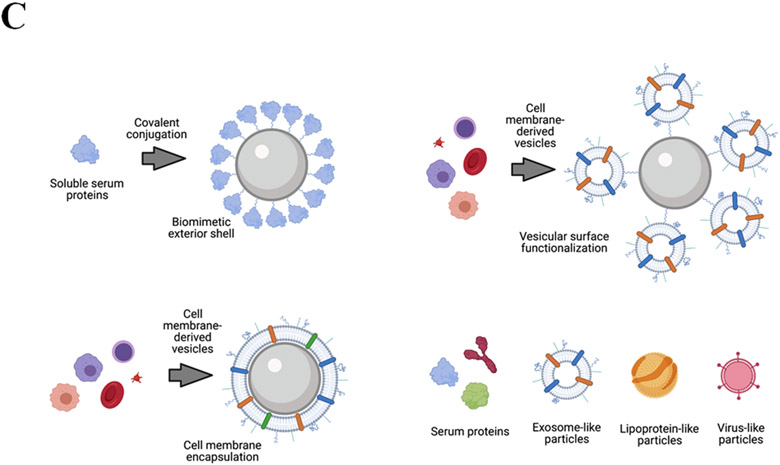Figure 6.
A) Left, persistent nanoparticles resist degradation and accumulate in target organs, resulting in long-term biological effects. Right, biodegradation strategy enables rapid elimination of nanomaterial or metabolism into bioidentical building blocks. B) Top, nanoparticles designed without consideration of corona composition may have undesirable biological interactions, extensive opsonization and rapid clearance, and/or accumulation in off-site organs and cell types. Middle, pre-addition of a defined corona prior to administration provides a foundation to influence further corona formation in vivo. Bottom, rational particle design strategy uses in silico modeling strategies to predict corona structure and composition in vivo, enabling control of the particle’s subsequent biological identity. C) Nanoparticles in excess of ~10 nm are too large to pass through glomerular fenestrations within the kidney, precluding efficient renal clearance of nanomaterial. Very small nanoparticles pass through fenestrations and can be eliminated in urine. D) Strategies to define the biological identity of particles by mimicking host biology. Upper left, nanoparticles surfaces are densely functionalized with serum proteins or other native biomolecules. Upper right, nanoparticles are conjugated to host cell surfaces or cell membrane-derived vesicles. Lower left, cell membrane derived from host cells is used to completely envelop nanoparticles within an extracellular vesicle-like structure. Lower right, biomimetic nanoparticles utilize bioidentical materials for particle construction.


